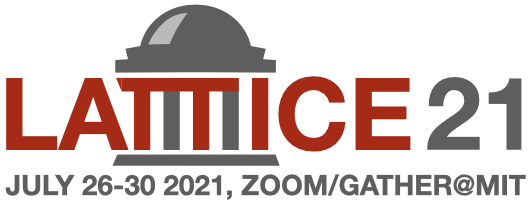Speaker
Description
Quantizing topological excitations beyond a semiclassical approximation is a nontrivial issue. Examples of relevant topological excitations are vortices in (2+1) dimensions. They are the condensed matter analogs of monopoles in particle physics and arise in Bose-Einstein condensates and superfluids. These systems can be described by the (2+1)-d O(2) model, where vortices are present through nontrivial winding of the field. This model can be dualized into scalar QED and, in the broken phase, the vortex becomes an infraparticle that is surrounded by a cloud of photons spreading out to infinity. As Gauss's law forbids a single charged particle to be placed in a periodic volume, it equivalently forbids a single vortex to exist by itself. We circumvent this issue, without breaking translation invariance, by imposing C-periodic boundary conditions. By simulating the dual theory, scalar QED, we compute the universal finite-volume vortex mass and charge near the Wilson-Fisher fixed point.
